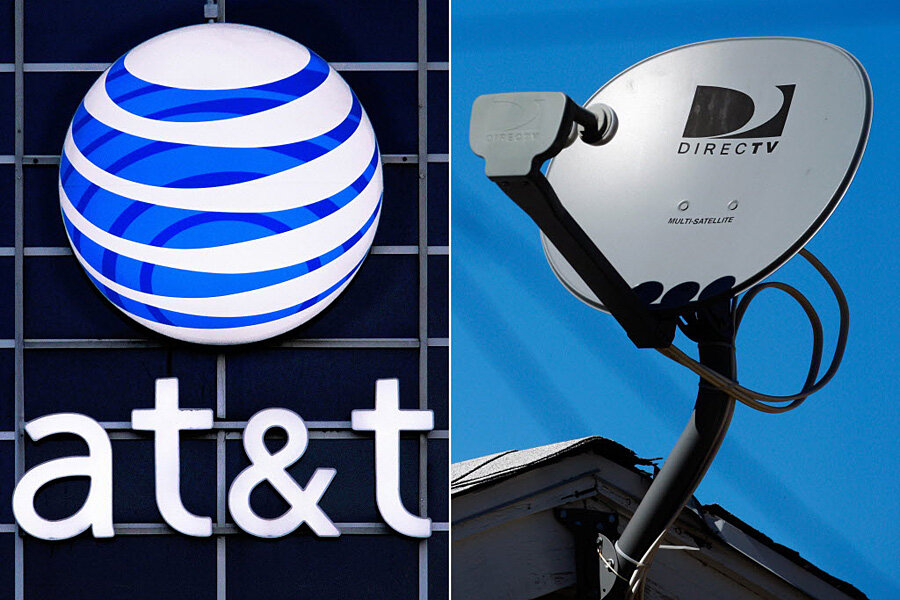AT&T unveils TV and wireless package after clinching takeover of DirecTV
Loading...
The communications giant AT&T has wasted no time capitalizing on its recent $48.5 billion takeover of DirecTV. On Monday, the company announced a new TV and wireless phone service that integrates the satellite TV firm with AT&T’s cell and data plans.
The announcement comes just over a week after AT&T announced it had finalized its acquisition of DirecTV. Randall Stephenson, AT&T chairman and CEO, explained the significance of the deal in a news release.
“Combining DIRECTV and AT&T is all about giving customers more choices for great video entertainment integrated with mobile and high-speed Internet service. We’ll now be able to meet consumers’ future entertainment preferences, whether they want traditional TV service with premier programming, their favorite content on a mobile device, or video streamed over the Internet to any screen.”
Merger seems to be the name of the game for communications companies this year. They include Charter Communication’s proposed acquisition of Time Warner Cable and Bright House Networks – deals that together total $67.1 billion – and Verizon Communications recent $4.4 billion deal for AOL, as The New York Times reported. Verizon also recently announced it would be adding content from Vice Media to its coming mobile video service.
Comcast originally aimed to acquire Time Warner Cable, but the deal unraveled after the US Department of Justice and the Federal Communications Commission (FCC) expressed concern about Comcast’s post-merger power. Comcast would have controlled about half of the American broadband market, making it easy for the company to impose its will on new video-streaming services and possibly foist anti-competitive measures on the fledgling market, as USA TODAY reported.
But now, Charter looks set to take over Time Warner Cable by the end of the year amid little regulatory concern, Reuters reported. It’s possible that this is due to AT&T’s acquisition of DirecTV – a merger that created the country’s largest television distributor.
“The fact that this [AT&T] deal closed with probably pretty reasonable conditions gives a little bit more confidence that Charter and Time Warner Cable would close, and maybe down the road opens the door for other deals,” Amy Yong, a media analyst with Macquarie Group, told The New York Times in July.
With the rise of video-streaming services like Netflix and Hulu, communications companies are scrambling to keep up with customer preferences. But AT&T’s new TV and wireless-phone-service plan will be the first of its kind, distinguishing it from the other companies exploring multimedia platforms.
According to the Washington Post, AT&T is marketing the so-called All-in-One plans by saying it’s the only company that offers a nationwide video and wireless package on a single bill. Customers who sign up for DirecTV and add a wireless plan will pay a starting rate of just over $200 a month – $160 for basic phone plane with 10 GB of shared data across four lines and $50 for TV, and a $10-a-month discount off your bill for signing onto the plan. Note that this rate may change.
Other cable companies are rumored to be in similar merger talks, USA TODAY reported.






